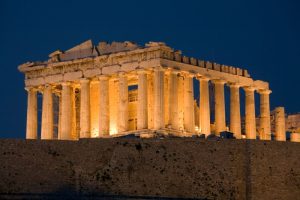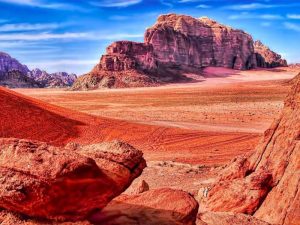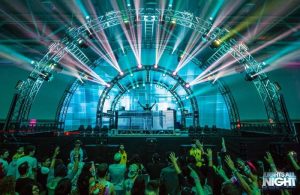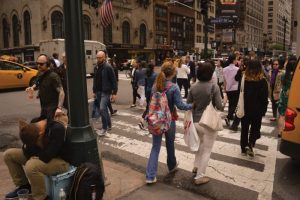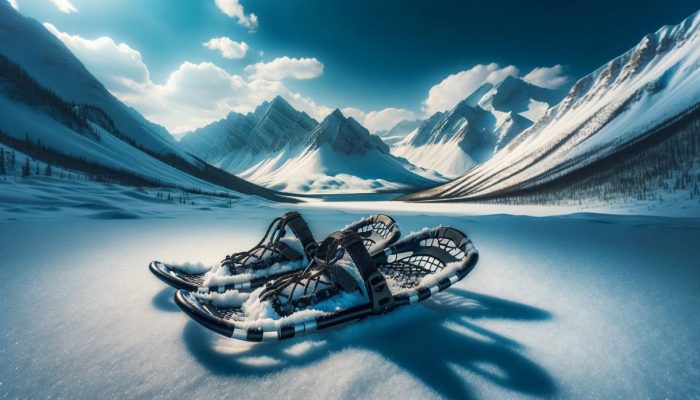
Escape the ordinary and embrace the extraordinary with a snowshoeing holiday package. Imagine crisp winter air, breathtaking landscapes, and the invigorating thrill of traversing snow-covered trails. These packages cater to a diverse range of adventurers, from seasoned snowshoers seeking challenging expeditions to beginners eager for a gentle introduction to this captivating winter sport. Whether you prefer the luxury of a guided tour with plush accommodations or the independence of an unguided adventure, there’s a perfect snowshoeing getaway waiting for you.
These packages typically include transportation, accommodation, snowshoe rentals (often), guided excursions (depending on the package), and sometimes meals. The target audience is broad, encompassing families, couples, and individuals of varying fitness levels and ages. The experiences offered are equally diverse, ranging from leisurely strolls through snowy forests to challenging climbs up mountain peaks, and even nighttime snowshoeing under the stars.
Defining Snowshoeing Holiday Packages

Snowshoeing holiday packages offer a unique blend of adventure and relaxation, providing opportunities to explore snowy landscapes while enjoying comfortable accommodations and curated activities. These packages cater to a diverse range of travelers seeking a winter escape, encompassing various levels of experience and preferences.
Typical components of a snowshoeing holiday package usually include snowshoe rentals or access to snowshoes, guided or unguided snowshoeing excursions (with varying difficulty levels), accommodation (ranging from rustic cabins to luxurious resorts), and often meals. Some packages might also include additional activities such as cross-country skiing, ice skating, or après-ski events. Transportation to and from the snowshoeing location may or may not be included, depending on the specific package.
Target Audience for Snowshoeing Holiday Packages
Snowshoeing holiday packages appeal to a broad spectrum of individuals and groups. The target audience encompasses a wide age range, from young adults seeking adventurous experiences to older adults looking for a more moderate and scenic winter getaway. Experience levels vary greatly, with packages designed for both beginners and experienced snowshoers. Families with children often participate, choosing packages with less strenuous trails and child-friendly activities.
Fitness levels are also considered, with packages catering to those seeking gentle walks and others focusing on more challenging hikes.
Types of Snowshoeing Holiday Packages
Snowshoeing holiday packages are offered across a wide range of price points and styles. Luxury packages often feature high-end accommodations, gourmet meals, private guides, and access to exclusive areas. These packages prioritize comfort and pampering, offering a truly indulgent winter escape. In contrast, budget-friendly packages may focus on basic accommodation, shared guides, and simpler meals, emphasizing affordability and accessibility for a wider range of travelers.
Guided snowshoeing packages provide the expertise of experienced guides, ensuring safety and enhancing the overall experience by offering insights into the local environment and wildlife. Unguided packages offer more freedom and independence, allowing participants to explore at their own pace.
Sample Snowshoeing Holiday Package Itinerary
This example showcases a three-day, two-night guided snowshoeing package in a mountainous region known for its scenic trails and winter activities.
Day 1: Arrival and orientation at a cozy mountain lodge. Afternoon introductory snowshoeing session on a gentle, scenic trail. Evening: Welcome dinner featuring local cuisine.
Day 2: Full-day guided snowshoeing excursion to a higher elevation viewpoint with panoramic vistas. Packed lunch provided. Afternoon: Relaxation at the lodge, optional activities like a sauna or hot tub. Evening: Dinner and storytelling around a fireplace.
Day 3: Morning snowshoeing excursion to a nearby frozen lake for ice skating or exploring the winter wonderland. Late morning: Check out from the lodge and departure.
Accommodation: The package includes comfortable rooms at a charming mountain lodge with all necessary amenities. Meals: Breakfast, lunch, and dinner are included, showcasing regional specialties and fresh, local ingredients.
Snowshoeing Destinations and Experiences
Embarking on a snowshoeing adventure offers a unique blend of physical activity and breathtaking natural beauty. From serene forests to challenging mountain peaks, diverse locations worldwide cater to varying skill levels and preferences, providing unforgettable experiences for both novice and experienced snowshoers. The following explores popular destinations and the distinctive experiences they offer.
Popular Snowshoeing Destinations
Numerous locations worldwide provide exceptional snowshoeing opportunities. The Canadian Rockies, for example, boast expansive, pristine landscapes with trails ranging from gentle strolls to strenuous climbs. Similarly, the Scandinavian countries, including Norway, Sweden, and Finland, offer a unique blend of snowy forests and frozen lakes, perfect for tranquil snowshoeing excursions. In the United States, destinations like Yellowstone and Glacier National Parks provide stunning scenery and diverse trails, while the Adirondack Mountains in New York offer a more accessible option for East Coast enthusiasts.
Further afield, the Japanese Alps provide a culturally rich experience alongside incredible snowshoeing. Each location offers a distinctive character and level of challenge.
Unique Snowshoeing Experiences
Beyond traditional daytime snowshoeing, many locations offer specialized experiences. Night snowshoeing, for instance, provides a magical atmosphere, transforming familiar trails into enchanting winter wonderlands under the starry sky. Several destinations organize guided nighttime snowshoeing tours, often incorporating elements like bonfires and hot cocoa for an enhanced experience. Wildlife viewing is another popular addition, with some locations offering guided tours that focus on spotting local animals like deer, moose, or even wolves (depending on the region and season).
These specialized tours often incorporate expert guides who share their knowledge of the local ecosystem and fauna.
Difficulty Levels of Snowshoeing Trails
Snowshoeing trail difficulty varies considerably depending on factors such as elevation gain, terrain, and trail length. Gentle trails, often found in lower elevations and flatter terrain, are ideal for beginners and families. These typically involve minimal elevation change and well-maintained paths. Intermediate trails incorporate more challenging aspects, such as moderate inclines and possibly uneven terrain, requiring a moderate level of fitness.
Advanced trails, frequently located at higher elevations, feature steep inclines, challenging terrain, and longer distances, demanding a high level of fitness and experience. It’s crucial to select a trail appropriate to one’s skill level and physical capabilities. Always check trail conditions and weather forecasts before embarking on a snowshoeing adventure.
Visual Representation of a Snowshoeing Destination
Imagine a scene: The sun, a soft orb low in the sky, casts a warm, golden light on a snow-covered forest in the Canadian Rockies. Towering evergreens, their branches heavy with snow, stand silhouetted against the vibrant hues of the setting sun. A pristine, snow-covered trail winds gently through the forest, its surface undisturbed except for the faint tracks of a snowshoe hiker.
The air is crisp and cold, carrying the scent of pine and the distant sound of a rushing river. A sense of tranquility and serenity pervades the scene, punctuated only by the soft crunch of snow underfoot. This visual encapsulates the beauty and peacefulness often found on snowshoeing trails in the Canadian Rockies.
Pricing and Value Proposition

Snowshoeing holiday packages offer a unique blend of adventure, relaxation, and connection with nature, but understanding their pricing and the value they offer is crucial for both providers and potential customers. Several factors interplay to determine the final cost, and comparing this to alternative winter activities helps highlight the overall appeal.Factors Influencing Pricing of Snowshoeing Holiday PackagesThe price of a snowshoeing holiday package is a complex equation influenced by various factors.
Location plays a significant role; packages in popular, easily accessible resorts tend to be more expensive than those in more remote areas. The duration of the trip significantly impacts cost, with longer trips naturally costing more. Accommodation type (luxury lodge versus rustic cabin) dramatically alters the price. The level of guided service included—from basic trail maps to expert-led excursions—also affects the final cost.
Finally, included meals, equipment rentals, and transportation options all contribute to the overall package price. For example, a five-day, all-inclusive luxury package in the Swiss Alps will be considerably more expensive than a two-day, self-guided trip in a less-developed region of the Canadian Rockies.
Value Proposition Compared to Other Winter Activities
Snowshoeing offers a unique value proposition compared to other winter activities. Unlike downhill skiing or snowboarding, which require significant skill and can be physically demanding, snowshoeing is relatively accessible to people of all fitness levels. It provides a gentler, more contemplative way to experience winter landscapes, fostering a deeper connection with nature. Compared to cross-country skiing, snowshoeing often requires less specialized equipment and training, making it a more budget-friendly option for beginners.
The quieter, more peaceful experience of snowshoeing is also a key differentiator, attracting those seeking a tranquil escape from the hustle and bustle of more crowded winter sports.
Comparison of Pricing from Different Tour Operators
Pricing varies significantly across different tour operators. Factors such as the reputation of the company, the level of service offered, and the specific inclusions of the package all contribute to the price differences. For instance, a well-established, luxury tour operator might charge significantly more than a smaller, locally-owned business. Comparing packages requires careful examination of the inclusions – some operators may include equipment rental and guided tours in the price, while others might charge extra for these services.
Online comparison websites can be helpful in identifying price ranges and features offered by different operators. However, it’s crucial to read reviews and compare the specific details of each package before making a decision.
Comparison of Snowshoeing Package Options
The following table provides a simplified comparison of hypothetical snowshoeing packages, highlighting the variability in price and features. Remember that actual prices and offerings will vary depending on the specific tour operator, location, and time of year.| Package Name | Duration | Price (USD) | Features ||————————–|———-|————–|————————————————-|| Alpine Adventure | 3 Days | 750 | Guided tours, accommodation, equipment rental || Snowshoe Escape | 2 Days | 400 | Self-guided, accommodation, basic equipment rental || Winter Wonderland Retreat | 5 Days | 1500 | Luxury accommodation, all meals, guided tours, spa access || Northern Lights Trek | 4 Days | 1000 | Guided tours, rustic cabin accommodation, meals included |
Marketing and Promotion
A successful marketing strategy for snowshoeing holiday packages requires a multi-faceted approach, leveraging both online and offline channels to reach the target audience. This strategy must clearly communicate the unique benefits and experiences offered, differentiating the packages from competitors and driving bookings. Effective marketing will build brand awareness, generate leads, and ultimately convert prospects into paying customers.The key to a successful marketing campaign lies in understanding the target demographic – active individuals and couples seeking unique winter adventures, possibly with a focus on wellness and nature appreciation.
Marketing materials should appeal to this audience’s desires for escape, relaxation, and invigorating experiences.
Marketing Strategy
Our marketing strategy will focus on a blend of digital and traditional methods. Digital marketing will primarily utilize social media platforms, targeted online advertising, and email marketing to reach a wider audience and track campaign performance. Traditional marketing will involve partnerships with travel agencies, collaborations with relevant influencers, and print advertising in specialized travel magazines. This integrated approach maximizes reach and impact.
Marketing Materials
Brochures and website content will showcase stunning photography of snow-covered landscapes, individuals snowshoeing through pristine forests, and cozy accommodations. Text will highlight the unique experiences offered, emphasizing the tranquility of snowshoeing, the breathtaking scenery, and the chance to connect with nature. For example, one brochure might feature a headline like “Escape the Ordinary: Discover the Serenity of Snowshoeing,” accompanied by images depicting a serene winter landscape and happy snowshoers enjoying a warm beverage after a day’s adventure.
The website will include detailed itineraries, high-resolution images, customer testimonials, and a booking system. Video content showcasing the beauty of the destinations and the excitement of snowshoeing will be integral to our online presence.
Successful Marketing Campaigns
Several adventure travel companies have successfully employed targeted marketing campaigns. For example, a company specializing in hiking tours in national parks might use stunning photography and videography showcasing the beauty of these parks, emphasizing the unique flora and fauna. This approach resonates with nature enthusiasts and adventure seekers. Another example could be a company offering kayaking tours, using videos demonstrating the thrill of navigating through clear waters, accompanied by testimonials from satisfied customers.
This builds trust and credibility. These successful campaigns highlight the importance of high-quality visual content and compelling storytelling.
Social Media Marketing
Social media platforms like Instagram, Facebook, and YouTube will be crucial for promoting snowshoeing holiday packages. Instagram, with its emphasis on visually appealing content, will be ideal for showcasing stunning photos and videos of snowshoeing adventures. Facebook will be used for targeted advertising, reaching specific demographics based on interests and location. YouTube will host engaging videos showcasing the experience, from preparation to the actual snowshoeing adventure.
We will also utilize user-generated content, encouraging customers to share their experiences using a unique hashtag. This fosters a sense of community and generates authentic marketing content. Consistent posting, engaging with followers, and running contests and giveaways will be key to building a strong social media presence.
Comparison with Other Holiday Types
Snowshoeing holidays offer a unique blend of physical activity, natural beauty, and tranquility, setting them apart from many other vacation styles. A direct comparison reveals both similarities and stark contrasts in terms of target audience, experience, and overall purpose. This section explores these differences, highlighting the distinctive appeal of snowshoeing getaways.
Snowshoeing Holidays Compared to Religious Pilgrimages
Religious pilgrimages focus on spiritual reflection and devotion, often involving visits to sacred sites and participation in religious ceremonies. The target audience is deeply religious individuals seeking spiritual enrichment. Snowshoeing holidays, conversely, prioritize physical activity and connection with nature, attracting those seeking adventure, exercise, and a peaceful escape. While both can offer a sense of personal renewal, the motivations and experiences differ significantly.
The former emphasizes spiritual growth within a structured religious framework, while the latter focuses on personal challenge and appreciation of the natural world.
Snowshoeing Holidays Compared to Wildlife Watching Trips
Both snowshoeing holidays and wildlife watching trips take place in natural environments and offer opportunities for observing wildlife. However, snowshoeing holidays involve active participation, requiring physical exertion and navigation through snowy landscapes. Wildlife watching trips, on the other hand, can range from passive observation to more active pursuits, such as bird watching or whale watching, but often emphasize observation over strenuous activity.
Snowshoeing might provide opportunities for closer encounters with wildlife, but the focus remains on the physical experience of snowshoeing, whereas wildlife watching prioritizes observing animals in their natural habitat.
Snowshoeing Holidays Compared to Winter Sports Trips
Winter sports trips encompass a wide range of activities, including skiing, snowboarding, and ice skating, demanding varying levels of skill and fitness. Snowshoeing holidays, while still a winter activity, typically involve a lower intensity of physical exertion and require less specialized skill. Skiing and snowboarding, for example, necessitate significant technical proficiency, while snowshoeing is relatively accessible to individuals with average fitness levels.
Both offer winter enjoyment, but snowshoeing provides a more relaxed, less demanding approach to experiencing the winter landscape.
Snowshoeing Holidays Compared to Island Hopping
Island hopping offers exploration of diverse island cultures and beaches, focusing on relaxation and cultural immersion. Snowshoeing holidays, conversely, are centered on the snowy wilderness, emphasizing physical activity and connection with a starkly different environment. The experiences are entirely contrasting: tropical warmth and vibrant cultures versus cold, snowy landscapes and quiet solitude. The target audiences also differ, with island hopping attracting those seeking relaxation and cultural exploration, while snowshoeing appeals to those who enjoy physical activity and winter landscapes.
Snowshoeing Holidays Compared to Voluntourism
Voluntourism combines travel with volunteer work, aiming to contribute to a community or cause while experiencing a new culture. Snowshoeing holidays, while potentially offering opportunities for environmental stewardship (e.g., trail maintenance), are primarily focused on personal recreation and enjoyment of nature. The primary purpose of voluntourism is service, whereas snowshoeing holidays center on personal experience and rejuvenation. The activities are also drastically different: community projects versus physical activity in the wilderness.
Snowshoeing Holidays Compared to Photography Tours
Photography tours focus on capturing stunning images in specific locations, requiring specialized equipment and photographic skills. Snowshoeing holidays provide ample opportunities for breathtaking photography, but the focus is on the snowshoeing experience itself, not necessarily on professional-level photography. While both can result in stunning images, the motivations and skill sets involved are different. A photography tour emphasizes capturing the perfect shot, while a snowshoeing holiday might incorporate photography as a complementary activity.
Snowshoeing Holidays Compared to Festival Travel
Festival travel involves attending cultural events and celebrations, emphasizing social interaction and immersion in local culture. Snowshoeing holidays, while possibly coinciding with local winter festivals, prioritize the snowshoeing experience and connection with nature, rather than cultural immersion. The focus is on individual or small-group activity within a natural setting, unlike the large-scale social gatherings typical of festival travel.
Snowshoeing Holidays Compared to Desert Expeditions
Desert expeditions involve navigating challenging terrains and enduring harsh environmental conditions. Snowshoeing holidays, while demanding some physical fitness, present a different set of environmental challenges. The contrasting environments – freezing cold versus extreme heat – necessitate different equipment, skills, and levels of physical preparation. The overall experience, from the physical demands to the landscape, is vastly different.
Snowshoeing Holidays Compared to Underwater Adventures
Underwater adventures, such as scuba diving or snorkeling, involve exploring aquatic environments and require specialized skills and equipment. Snowshoeing holidays are entirely land-based, focusing on navigating snowy landscapes. The environments, skills required, and the type of physical exertion are completely different. One requires aquatic proficiency, the other requires winter fitness and navigation skills.
Snowshoeing Holidays Compared to Art and Architecture Tours
Art and architecture tours concentrate on appreciating cultural heritage, historical buildings, and artistic creations. Snowshoeing holidays, while possibly incorporating visits to nearby historical sites, primarily focus on the physical activity and the natural environment. The interests and activities are vastly different, one centered on human creativity and history, the other on physical exertion and natural beauty.
Final Thoughts
Ultimately, snowshoeing holiday packages offer a unique blend of adventure, relaxation, and breathtaking natural beauty. Whether you’re seeking an adrenaline rush or a peaceful escape, these packages provide an unforgettable winter experience. The variety of destinations, difficulty levels, and package options ensures there’s a perfect fit for every traveler, promising memories that will last a lifetime. Consider the stunning visuals: a sun-dappled forest floor blanketed in pristine snow, the silence broken only by the gentle crunch of your snowshoes, and the majestic mountains rising in the distance – a truly captivating winter wonderland awaits.
Essential Questionnaire
What is included in a typical snowshoeing package?
This varies greatly depending on the provider and package chosen. Common inclusions are accommodation, transportation to trailheads, snowshoe rentals, and sometimes guided tours or meals.
What fitness level is required for snowshoeing?
Snowshoeing caters to various fitness levels. Easy trails are suitable for beginners, while more challenging routes exist for experienced hikers. Choose a package and trail that matches your capabilities.
What should I pack for a snowshoeing holiday?
Warm layers are essential, including waterproof outerwear, hats, gloves, and scarves. Sturdy, waterproof boots are also crucial. Consider bringing sunscreen and sunglasses, even on cloudy days.
Are snowshoeing holidays suitable for families with children?
Yes, many operators offer family-friendly packages with easier trails and activities suitable for children. Always check age restrictions and trail difficulty before booking.
